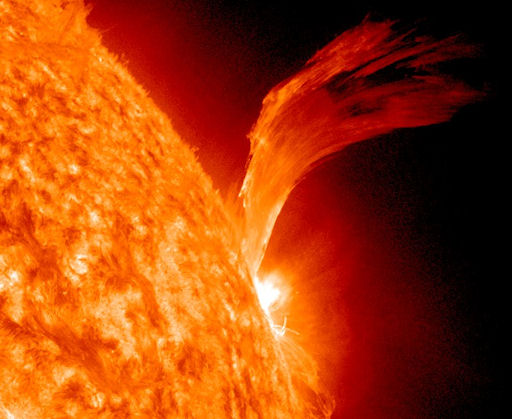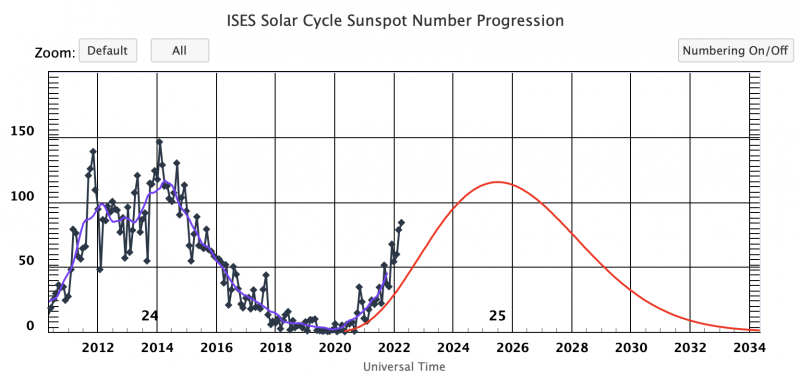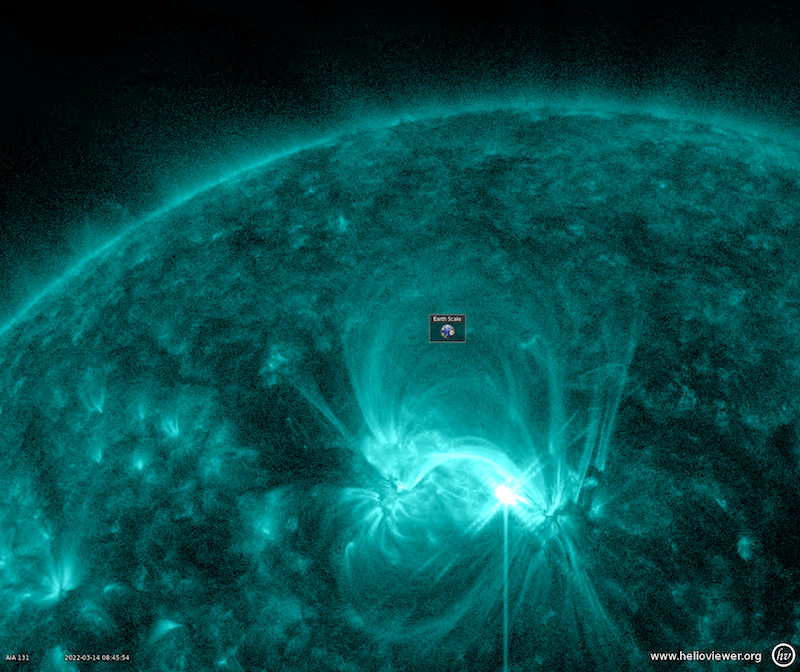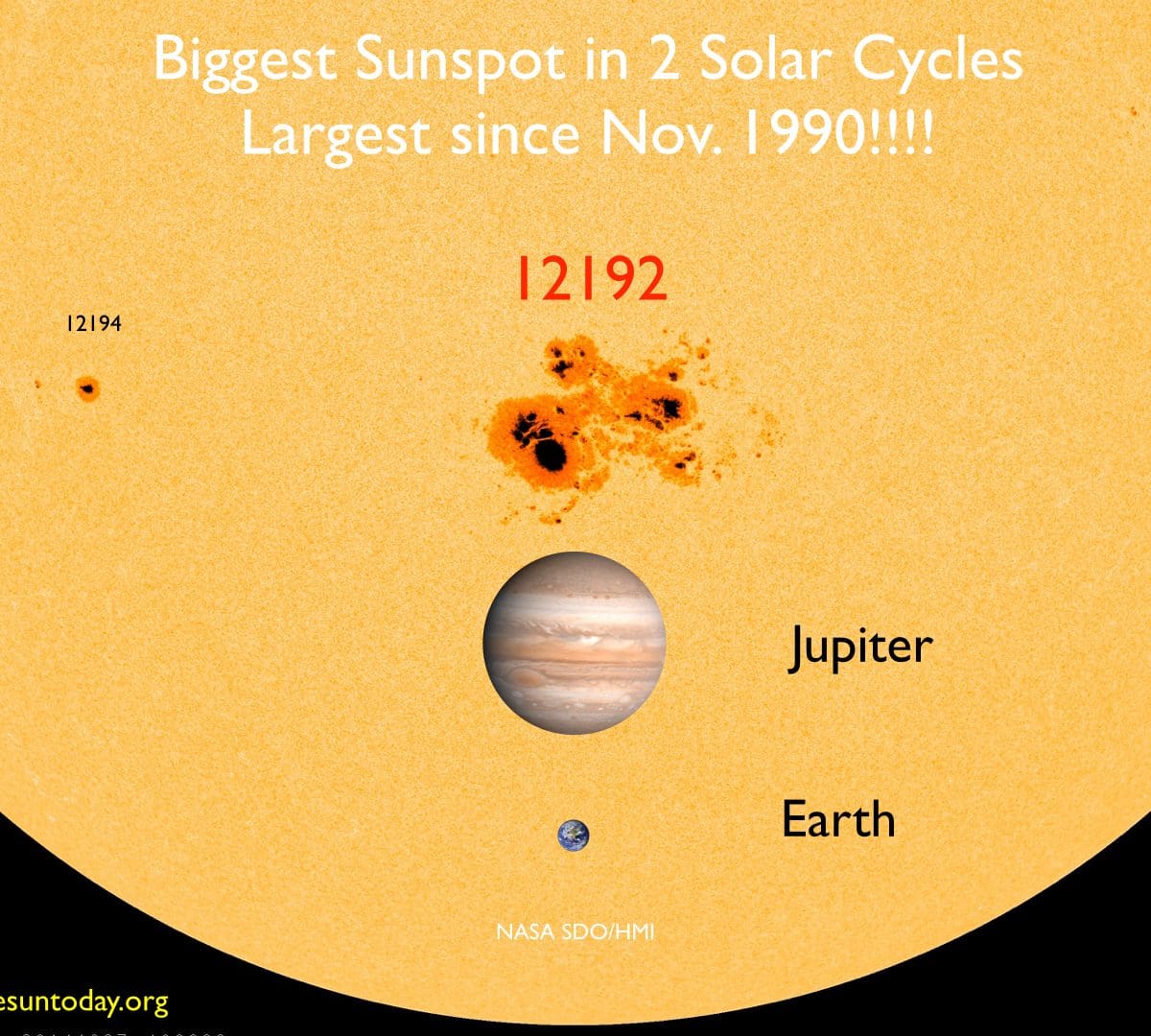
Just as sunspot group AR11105 rotated out of the Earth’s view it produced a spectacular show.
A large prominence erupted along with a C3 solar flare and a Coronal Mass Ejection (CME) blasted away from the sun.
This great show was captured by the Solar Dynamics Observatory (SDO) as well as the Solar and Heliospheric Observatory (SOHO) and the Solar Terrestrial Relations Observatory’s (STEREO) Ahead spacecraft.

A snapshot of a prominence erupting from AR11105 captured by the SDO spacecraft in the 304 Angstrom wavelenght.
This video first shows the 193 Angstrom coronal line, which corresponds to temperatures around ~1.5 million Kelvin and is produced by superheated iron.
There is a brightening from the flare and hot loops after the flare but the darker, cooler prominence can also be seen. In the background the curved structure that is the beginning of the CME (coronal mass ejection) is visible.
The second part of the video in the cooler 304 Angstrom emission line produced by superheated helium. The cooler chromospheric material making up the prominence is bright in this line around 60,000 to 80,000 Kelvin. The cross-like patterns are caused when the light produced by the flare and post-flare loops saturates the camera’s CCD. Just like when a bright light causes a streak in a digital camera.
The following video shows a close up of the events with images that are composites of 3 different wavelengths (3 colors) that correspond to 3 different temperatures. The 3 wavelengths are 211, 193 and 171 Angstrom. They show mostly the hotter corona but the cooler prominence can be seen as a dark structure jetting outward from the solar surface.
The 3 colors for the peak of the coronal emission are:
- RED = 211 Angstrom Iron emission line, ~2 million Kelvin
- GREEN = 193 Angstrom Iron emission line, ~1.5 million Kelvin
- BLUE = 171 Angstrom Iron emission line, ~1 million Kelvin
This is the first look at a global coronal wave produced by AR11105 around 20:00 UT on September 8, 2010.
This event was also observed by SDO and SOHO. The eruption included a flare, prominence eruption and CME. The data show here is the highly compressed spaceweather data from STEREO. This data helps give a first look at solar activity observed by STEREO. These images are from the EUVI instrument and show the 195 Angstrom emission of the ~1.5 Million Kelvin corona.
Lastly, the billion tons of solar plasma called a CME (Coronal Mass Ejection) was observed by the C2 coronagraph aboard SOHO.
It appears as a curved puff of smoke escaping the sun.
A CME Observed with the C2
These initial observations from a fleet of solar instruments indicate that this spaceweather event will not hit the earth. So, for now, we will not experience any of the beautiful and possibly disruptive effects of a solar storm.
(credit for movies and images: spaceweather.com, SDO, SOHO/NASA, STEREO/NASA, LMSAL)




